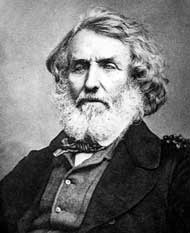Sir George Everest
| Sir George Everest | |
|---|---|

Photograph of Everest
|
|
| Born |
4 July 1790 Crickhowell, Wales, United Kingdom |
| Died |
1 December 1866 (aged 76) London, England |
| Citizenship | British |
| Nationality | Welsh |
| Fields | Geography |
| Known for | Great Trigonometric Survey of India |
Colonel Sir George Everest (/ˈiːvrᵻst/; 4 July 1790 — 1 December 1866) was a Welsh surveyor and geographer, and the Surveyor General of India from 1830 through 1843.
Everest was largely responsible for completing the section of the Great Trigonometric Survey of India along the meridian arc from southern India extending north to Nepal, a distance of about 2,400 kilometres (1,500 mi). This survey was started by William Lambton in 1806 and it lasted for several decades.
In 1865, Mount Everest was named in his honour in the English language, despite his objections, by the Royal Geographical Society. This enormous peak was surveyed by Radhanath Sikdar and named by Everest's successor, Andrew Scott Waugh, in his role as the Surveyor-General of India.
Everest was born in Gwernvale Manor, just west of Crickhowell in Brecknockshire, Wales, in 1790, and he was baptised in Greenwich.
Commissioned into the Royal Artillery, in 1818, Lt. Everest was appointed as assistant to Colonel William Lambton, who had started the Great Trigonometrical Survey of the subcontinent in 1806. On Lambton's death in 1823, Everest succeeded to the post of superintendent of the survey, and in 1830 he was appointed as the Surveyor-General of India.
...
Wikipedia
